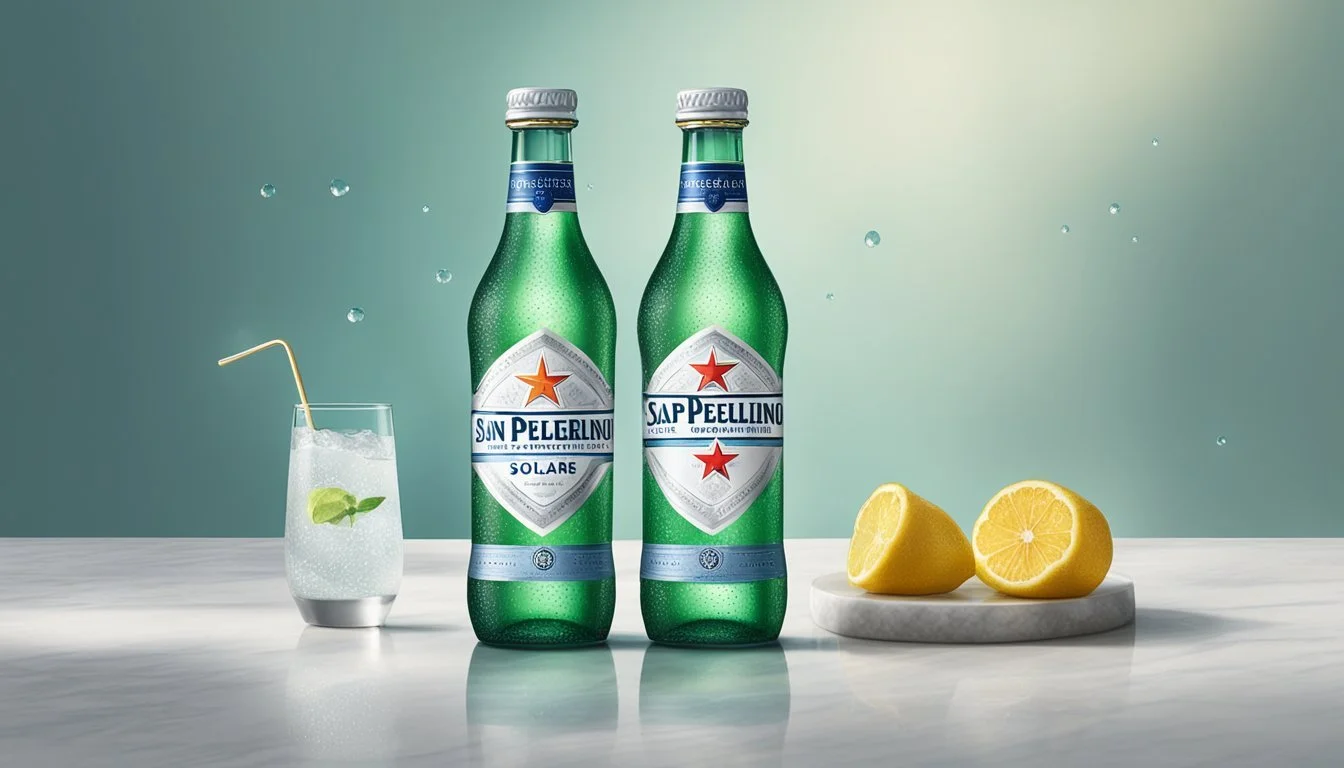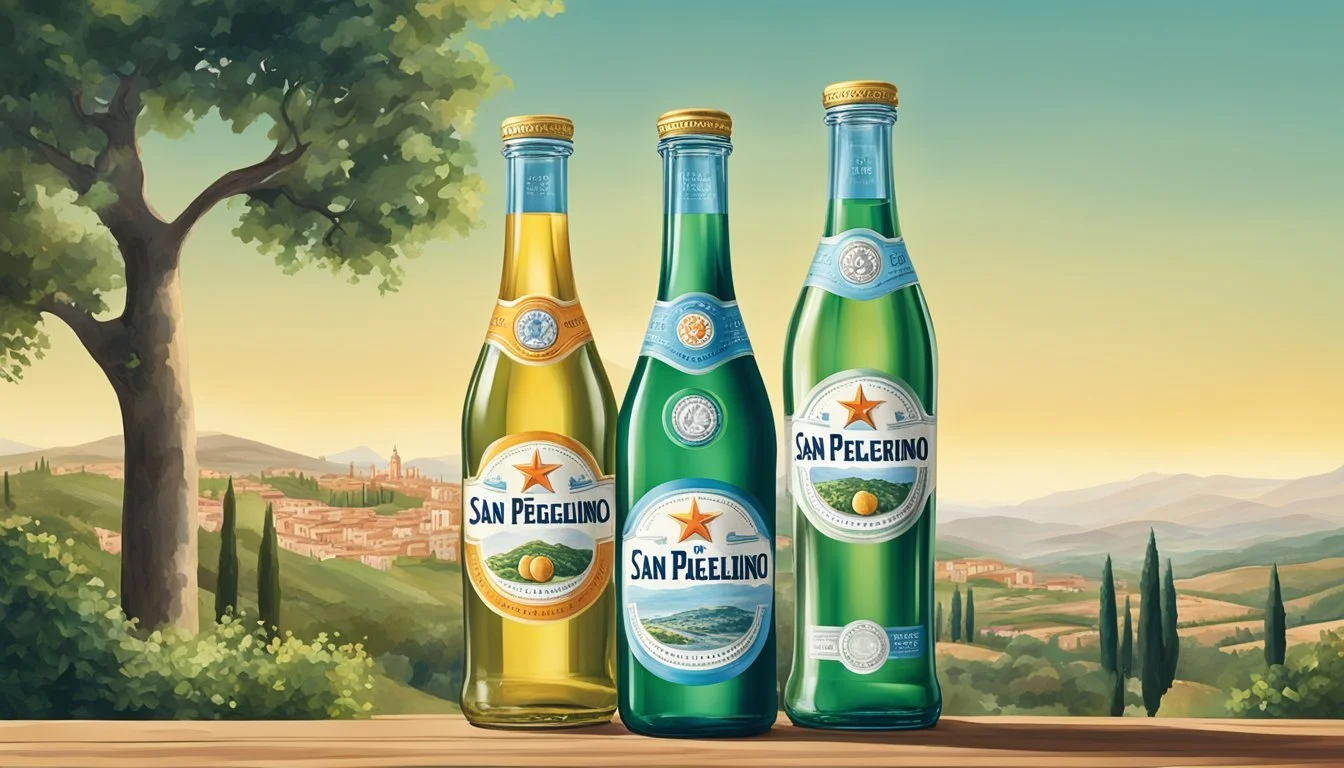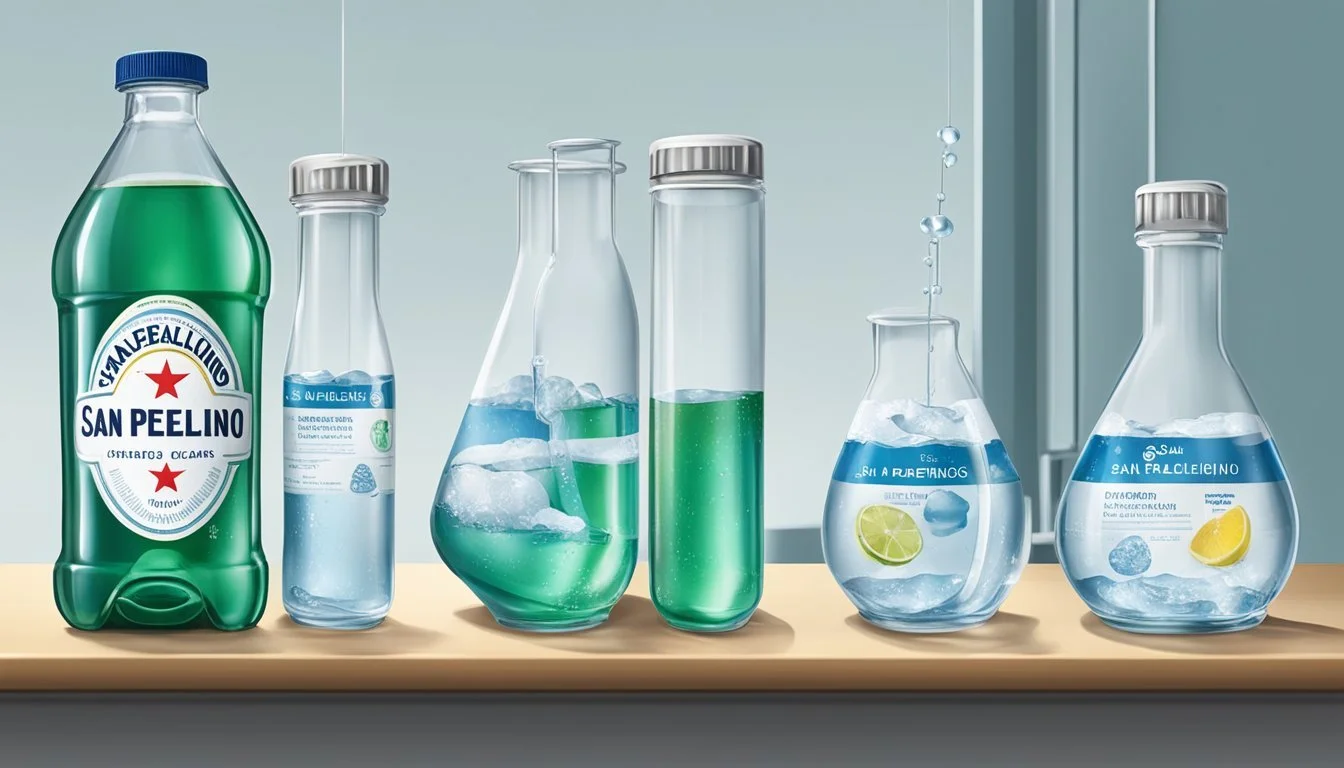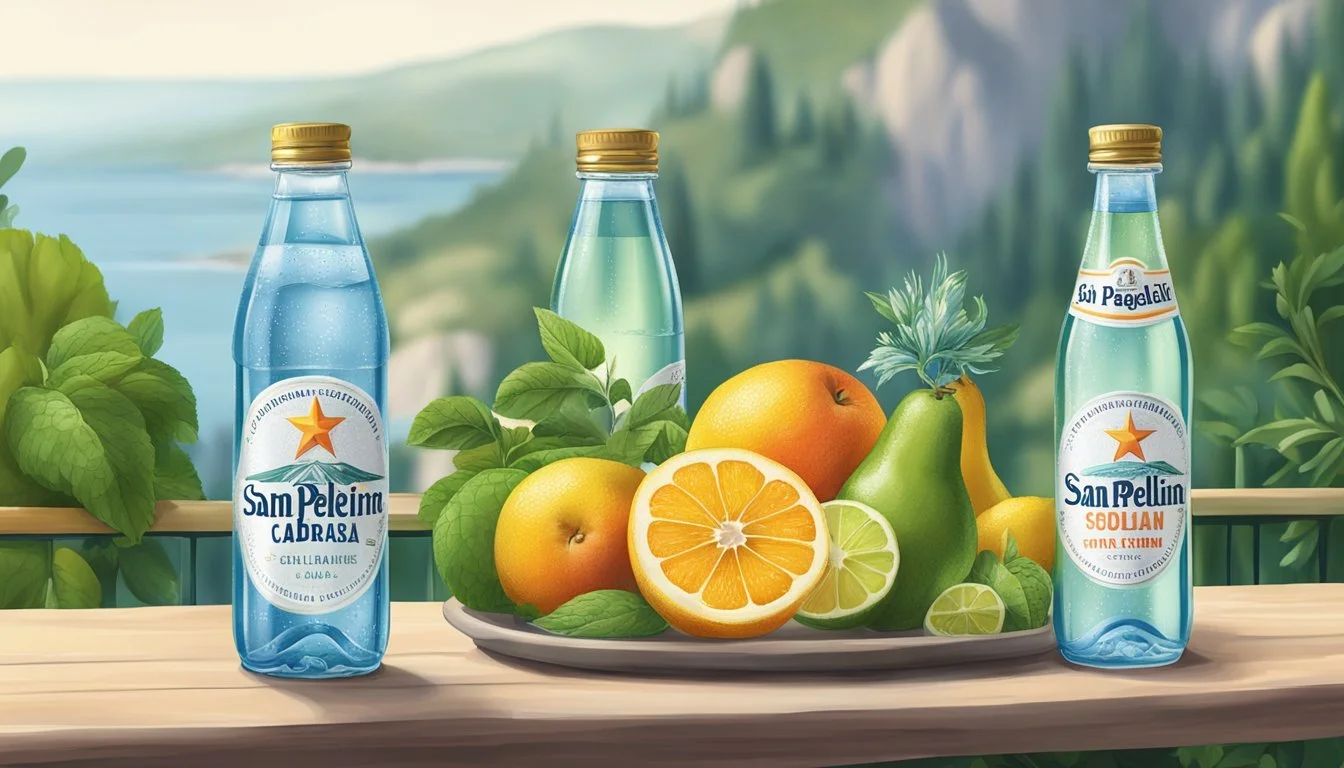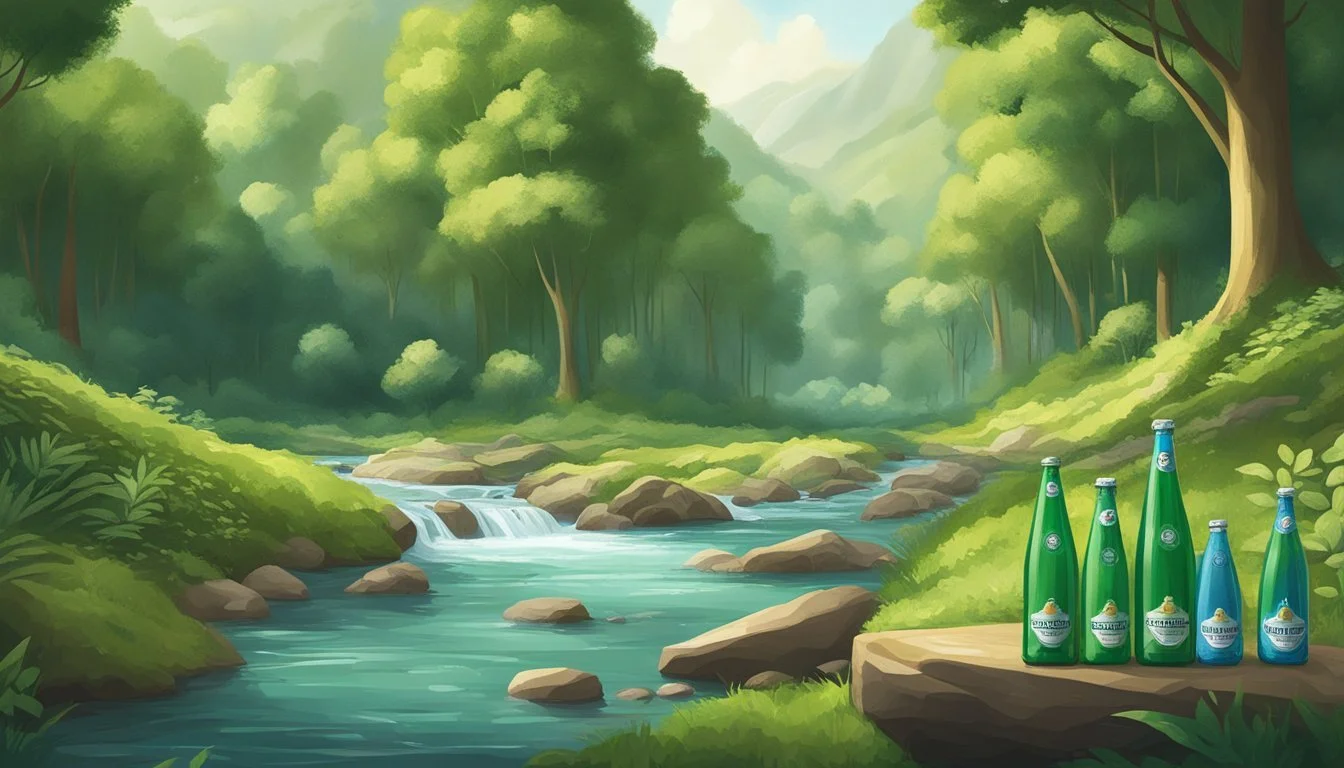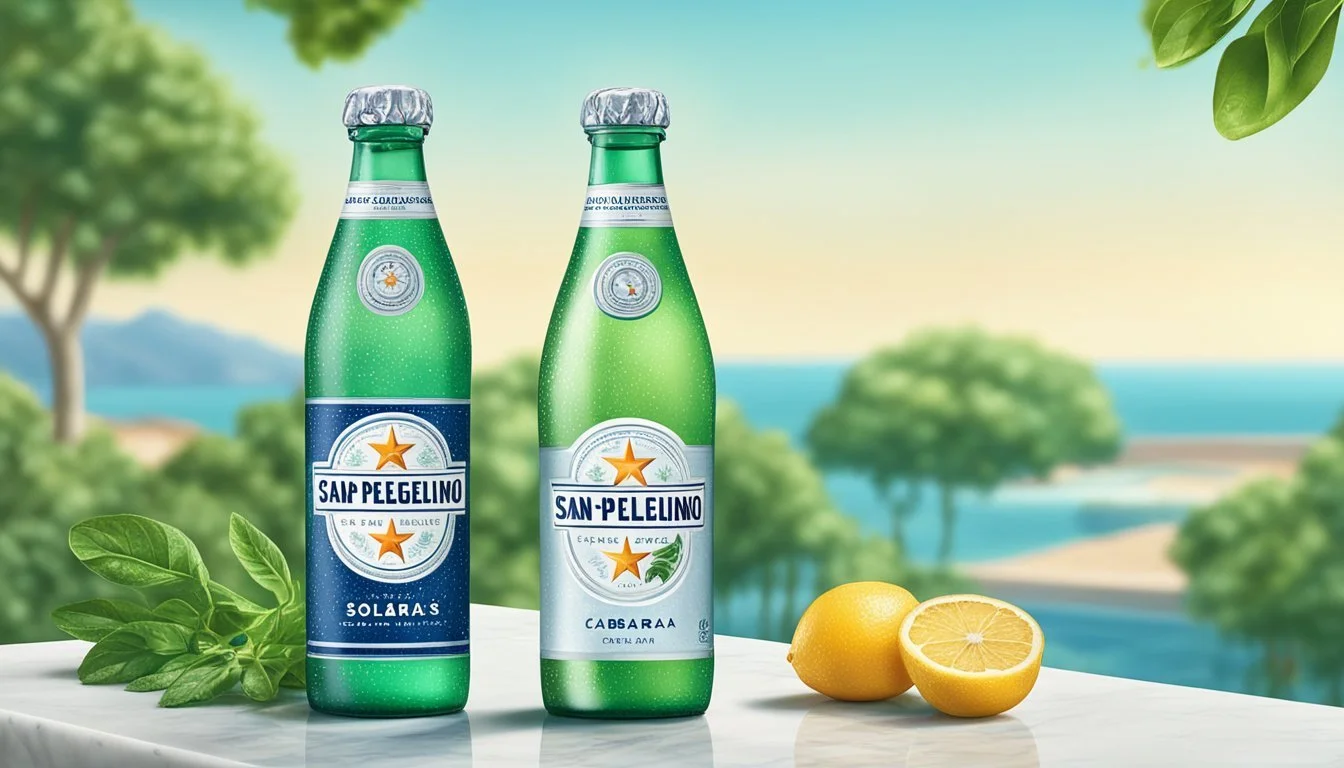San Pellegrino vs. Solán de Cabras
The Ultimate Bottled Water Comparison
A debate among bottled water enthusiasts centers on the premium options of San Pellegrino and Solán de Cabras. San Pellegrino, an iconic Italian brand known for its fine dining reputation and sparkling variants, offers a refreshing taste with a sophisticated profile. Originating from the Italian Alps and rich in mineral composition, it has been a favorite since its inception in 1899.
On the other hand, Solán de Cabras provides a historical depth and heritage that stretches back over 3,600 years. This Spanish water, sourced from the pristine spring of Serranía de Cuenca, boasts a distinctive mineral balance that is both unique and refreshing. Known historically for its purported healing properties, Solán de Cabras stands out among premium bottled waters for its pure and untouched nature.
When choosing between San Pellegrino and Solán de Cabras, it ultimately comes down to personal preference for either the refined, bubbly experience of San Pellegrino or the pure, mineral-rich taste of Solán de Cabras. Understanding these differences helps consumers appreciate the distinct qualities that make each brand exceptional in the world of bottled water.
Historical Context and Origin
Both San Pellegrino and Solán de Cabras boast rich histories rooted in the natural springs of Italy and Spain. Their origins reflect deep connections with their respective regions, making them popular choices for those seeking authenticity in bottled water.
San Pellegrino: From Italy's Depths
San Pellegrino originates from the foothills of the Italian Alps in the region of Lombardy. The spring has been known to produce mineral-rich water for centuries. It is said that the Romans discovered and valued these natural springs for their health benefits.
By 1899, the San Pellegrino brand was officially established, branding itself as a premium mineral water product. Its water is carbonated naturally through the spring's journey, providing a distinctive champagne-like fizz. The water's journey through the rocky Apennines enriches it with minerals, including calcium and magnesium, which contribute to its unique taste.
San Pellegrino's long-standing reputation for quality and luxury continues to make it a preferred choice in fine dining establishments worldwide. Its natural carbonation and mineral composition set it apart from other bottled waters.
Solán de Cabras: A Spanish Legacy
Solán de Cabras hails from the Serranía de Cuenca in Spain, with a history that spans over 225 years. The water springs from a natural source that has been revered since ancient times, with origins tracing back to over 3,600 years ago when thunderstorms contributed to its formation.
First bottled in the 18th century, Solán de Cabras has built a reputation for purity and authenticity. Historically, it has been prized for its purported health benefits, being preferred by Spanish royalty and hospitals.
Its distinctive blue bottle, introduced in modern times, has become a symbol of its legacy. The untouched, pristine nature of its source and the careful preservation of its natural qualities make it a standout choice for those seeking a premium water experience.
Chemical Composition and Mineral Content
San Pellegrino and Solán de Cabras are distinguished by their unique mineral compositions. These differences in mineral content impact their taste, health benefits, and suitability for various uses.
Understanding Mineral Water
Mineral water naturally contains minerals and trace elements extracted from geological formations. Typically, these waters have sodium, calcium, magnesium, and bicarbonates that significantly affect their taste and health benefits.
Sodium can enhance flavor and aid in hydration.
Calcium supports bone health.
Magnesium aids muscle function.
Bicarbonates can help with digestion.
Unique Profiles: San Pellegrino vs. Solán de Cabras
San Pellegrino is known for its distinct mineral profile. It contains:
Sodium: 33 mg/L
Calcium: 174 mg/L
Magnesium: 53 mg/L
Bicarbonate: 234 mg/L
Sulfate: 459 mg/L
San Pellegrino's high sulfate content contributes to its signature taste and slight effervescence.
Solán de Cabras boasts a different set of minerals:
Sodium: 1.4 mg/L
Calcium: 38 mg/L
Magnesium: 21 mg/L
Bicarbonate: 214 mg/L
Chloride: 0.55 mg/L
The significantly lower sodium and higher bicarbonate levels make Solán de Cabras a milder-tasting and purer water option.
These diverse compositions not only shape their taste but also cater to different health preferences and dietary needs.
Water Varieties
San Pellegrino and Solán de Cabras offer distinct options in the realm of bottled water, catering to differing tastes and preferences. These brands are recognized for their quality and varied selection, ranging from sparkling to still water.
Sparkling Water Showdown
San Pellegrino, an Italian staple, is celebrated for its classic sparkling mineral water. The effervescence level is moderate and complements its mineral-rich composition, derived from Italian springs. This makes it a favorite for pairing with gourmet dishes.
In contrast, Solán de Cabras, a Spanish brand, focuses less on sparkling varieties but offers a few options. Their sparkling water has a milder carbonation, appealing to those who prefer a subtler effervescent experience.
Brand Origin Sparkling Features San Pellegrino Italy Moderate effervescence, mineral-rich Solán de Cabras Spain Mild carbonation, smooth and light feel
The Case for Still Water
San Pellegrino also bottles Acqua Panna, a still water with a smooth and light taste, sourced from Tuscany. This water is appreciated for its neutral flavor and low mineral content, making it versatile for various settings.
Solán de Cabras offers its still water sourced from a remote spring in Spain. Known for its purity and balanced mineral composition, it provides a clean, refreshing taste. The unique azure blue bottle is also notable, emphasizing the brand's commitment to both quality and aesthetics.
Brand Origin Still Features San Pellegrino Italy (Panna) Smooth, low mineral content, versatile Solán de Cabras Spain Pure, balanced minerals, distinctive bottle design
Health and Hydration Benefits
Both San Pellegrino and Solán de Cabras bottled waters bring specific health and hydration advantages that can complement an individual's daily intake of fluids.
Minerals and Hydration
San Pellegrino water is rich in minerals sourced from the Italian Alps. It contains calcium, magnesium, and bicarbonate which help maintain hydration levels and electrolyte balance. These minerals are essential in ensuring proper muscle function and energy production.
Solán de Cabras water, sourced from Spain, is also mineral-rich with a unique composition that includes calcium and magnesium. The mineral content contributes to maintaining hydration by promoting the body's fluid balance and aiding in the prevention of dehydration.
With their mineral contents, both waters offer additional benefits beyond basic hydration. They provide electrolytes that are critical for various bodily functions, especially during physical activity or in hot weather.
Role in a Balanced Diet
Including mineral water like San Pellegrino and Solán de Cabras in a daily diet can support overall health. The minerals present in these waters do more than hydrate—they contribute to the body's nutrient needs.
Calcium in both waters helps in bone health and muscle function. Magnesium aids in metabolic processes and energy conversion. Bicarbonate in San Pellegrino supports pH balance, which is crucial for digestion.
Their consumption complements a balanced diet by providing essential minerals, enhancing the body's nutritional profile, and potentially reducing the need for supplements. Their source, purity, and mineral consistency make them valuable for those seeking reliable hydration and nutrition.
Sensory Experience and Culinary Uses
San Pellegrino and Solán de Cabras each offer distinct flavor profiles and textures that cater to different palates. These characteristics make them suitable for specific culinary uses and preferences, often highlighted by water sommeliers in fine dining settings.
Tasting Notes: Flavor and Texture
San Pellegrino is well-known for its moderate carbonation and crisp, slightly bitter taste. It presents a complex flavor profile with a hint of citrus and mineral notes, providing a refreshing palate cleanser. The effervescence and texture make it a popular choice in hot climates or to balance rich, savory dishes.
Solán de Cabras, on the other hand, offers a smoother, mineral-rich experience. Its soft texture and subtle flavors stem from its natural mineral composition, making it gentle on the palate. This water is often favored for its clean, pure taste, which complements lighter dishes and delicate flavors without overpowering them.
Fine Dining and Water Sommeliers
In fine dining establishments, water sommeliers play a crucial role in pairing these waters with appropriate dishes. San Pellegrino is frequently selected for its ability to cleanse the palate between courses, enhancing the tasting experience of robust dishes like meat and cheese plates. Its vibrant bubbles add a lively element to the dining experience.
Solán de Cabras is admired for its versatility and elegance in upscale restaurants. It pairs excellently with seafood, salads, and subtle dishes due to its gentle, unobtrusive flavor. High-end restaurants value its aesthetic appeal as well, often served in its signature blue glass bottles to enhance the dining atmosphere.
Packaging and Environmental Sustainability
Both San Pellegrino and Solán de Cabras are well-regarded for their commitment to high-quality packaging that reflects their brand ethos. When comparing these two brands, the materials used for their bottles and their environmental initiatives are key areas to consider.
Bottle Materials: Glass vs. Plastic
San Pellegrino predominantly uses glass and plastic bottles, offering consumers a choice depending on their preference and convenience needs. Glass bottles are lauded for being recyclable and are often preferred for dining experiences, adding a touch of elegance.
On the other hand, Solán de Cabras packages its water in blue glass bottles, emphasizing an environmentally friendly approach. These glass bottles are not only attractive but also fully recyclable, aligning with sustainability goals.
Environmental Impact and Initiatives
Both brands recognize the importance of reducing their environmental footprint. San Pellegrino has initiated programs to minimize the use of plastic and promote recycling. Their glass bottles are a key part of their strategy to reduce waste and support long-term sustainability.
Solán de Cabras focuses on the purity and sustainability of their product line. By opting for glass bottles, they lessen plastic waste and prioritize an eco-friendly approach. Furthermore, their long history and commitment to environmental stewardship are reflected in their ongoing efforts to support green practices and reduce their overall environmental impact.
Market Presence and Brand Image
San Pellegrino and Solán de Cabras are prominent brands renowned for their unique qualities and market presence. Both brands are highly regarded in the bottled water industry but cater to different consumer segments and preferences.
Consumer Perception and Reach
San Pellegrino, an Italian brand, is widely recognized for its sparkling mineral water. It enjoys substantial global reach, being available in numerous countries and often found in prestigious restaurants and hotels. The brand's association with fine dining elevates its status among consumers who appreciate luxury and sophistication.
Solán de Cabras, on the other hand, originates from Spain and is known for its still, mineral-rich water. It has a strong presence in the Spanish market and is also gaining traction internationally. Its reputation is built on purity, with water sourced from natural rainwater filtered through mountainous terrain, ensuring a high-quality product.
High-End Appeal and Affiliations
San Pellegrino's affiliation with fine dining establishments and luxury hotels underscores its premium image. Frequently featured in high-end culinary experiences, it is seen as a mark of elegance and refined taste. The brand's consistent quality and effervescent character make it a favorite among chefs and sommeliers.
Solán de Cabras also targets the high-end market, emphasizing its historical and natural origins. The brand is often associated with wellness and health, appealing to consumers who prioritize purity and natural quality. Its distinct blue bottle design and marketing efforts highlight its commitment to authenticity and premium appeal.
Both brands excel in their respective niches, offering consumers high-quality bottled water with unique characteristics.
More About San Pellegrino
Acqua Panna vs San Pellegrino: Which Bottled Water is Better?
Boxed Water vs San Pellegrino: Which Bottled Water is Better?
Core Hydration vs San Pellegrino: Which Bottled Water is Better?
Ice Mountain vs San Pellegrino: Which Bottled Water is Better?
Icelandic Glacial vs San Pellegrino: Which Bottled Water is Better?
Just Water vs San Pellegrino: Which Bottled Water is Better?
Mountain Valley Spring Water vs San Pellegrino: Which Bottled Water is Better?
Nestle Pure Life vs San Pellegrino: Which Bottled Water is Better?
Poland Spring vs San Pellegrino: Which Bottled Water is Better?
San Pellegrino vs Alkaline88: Which Bottled Water is Better?
San Pellegrino vs Aqua Carpatica: Which Bottled Water is Better?
San Pellegrino vs Cascade Mountain: Which Bottled Water is Better?
San Pellegrino vs Castle Rock: Which Bottled Water is Better?
San Pellegrino vs CBD Living: Which Bottled Water is Better?
San Pellegrino vs Crystal Geyser: Which Bottled Water is Better?
San Pellegrino vs Crystal Lake: Which Bottled Water is Better?
San Pellegrino vs Essence pH10: Which Bottled Water is Better?
San Pellegrino vs Hawaii Volcanic: Which Bottled Water is Better?
San Pellegrino vs Hawaiian Springs: Which Bottled Water is Better?
San Pellegrino vs Kirkland Signature: Which Bottled Water is Better?
San Pellegrino vs Liquid Death: Which Bottled Water is Better?
San Pellegrino vs Open Water: Which Bottled Water is Better?
San Pellegrino vs Proud Source: Which Bottled Water is Better?
San Pellegrino vs Purely Sedona: Which Bottled Water is Better?
San Pellegrino vs Richard's Rainwater: Which Bottled Water is Better?
San Pellegrino vs Simple Truth: Which Bottled Water is Better?
San Pellegrino vs Smartwater: Which Bottled Water is Better?
San Pellegrino vs Talking Rain AQA: Which Bottled Water is Better?
San Pellegrino vs Topo Chico: Which Bottled Water is Better?
San Pellegrino vs Weird Water: Which Bottled Water is Better?
San Pellegrino vs Whole Foods 365: Which Bottled Water is Better?
San Pellegrino vs Whole Foods Italian Still Mineral water: Which Bottled Water is Better?
San Pellegrino vs Zephyrhills: Which Bottled Water is Better?
More About Solán de Cabras
Acqua Pana vs Solan de Cabras: Which Bottled Water is Better?
Antipodes vs Solan de Cabras: Which Bottled Water is Better?
Aqua Carpatica vs Solan de Cabras: Which Bottled Water is Better?
Arrowhead vs Solan de Cabras: Which Bottled Water is Better?
Boxed Water vs Solan de Cabras: Which Bottled Water is Better?
Castle Rock vs Solan de Cabras: Which Bottled Water is Better?
Core Hydration vs Solan de Cabras: Which Bottled Water is Better?
Deer Park vs Solan de Cabras: Which Bottled Water is Better?
Hawaiian Springs vs Solan de Cabras: Which Bottled Water is Better?
Ice Mountain vs Solan de Cabras: Which Bottled Water is Better?
Icelandic Glacial vs Solan de Cabras: Which Bottled Water is Better?
Just Water vs Solan de Cabras: Which Bottled Water is Better?
Mountain Valley Spring Water vs Solan de Cabras: Which Bottled Water is Better?
Nestle Pure Life vs Solan de Cabras: Which Bottled Water is Better?
Poland Spring vs Solan de Cabras: Which Bottled Water is Better?
Smartwater vs Solan de Cabras: Which Bottled Water is Better?
Solan de Cabras vs 1907water: Which Bottled Water is Better?
Solan de Cabras vs Alkaline88: Which Bottled Water is Better?
Solan de Cabras vs Big Chill: Which Bottled Water is Better?
Solan de Cabras vs BodyArmor: Which Bottled Water is Better?
Solan de Cabras vs Cascade Mountain: Which Bottled Water is Better?
Solan de Cabras vs CBD Living: Which Bottled Water is Better?
Solan de Cabras vs Crystal Geyser: Which Bottled Water is Better?
Solan de Cabras vs Crystal Lake: Which Bottled Water is Better?
Solan de Cabras vs Essence pH10: Which Bottled Water is Better?
Solan de Cabras vs Hawaii Volcanic: Which Bottled Water is Better?
Solan de Cabras vs Kirkland Signature: Which Bottled Water is Better?
Solan de Cabras vs Liquid Death: Which Bottled Water is Better?
Solan de Cabras vs Open Water: Which Bottled Water is Better?
Solan de Cabras vs Proud Source: Which Bottled Water is Better?
Solan de Cabras vs Pure Life: Which Bottled Water is Better?
Solan de Cabras vs Purely Sedona: Which Bottled Water is Better?
Solan de Cabras vs Richard's Rainwater: Which Bottled Water is Better?
Solan de Cabras vs Simple Truth: Which Bottled Water is Better?
Solan de Cabras vs Talking Rain AQA: Which Bottled Water is Better?
Solan de Cabras vs Weird Water: Which Bottled Water is Better?
Solan de Cabras vs Whole Foods 365: Which Bottled Water is Better?
Solan de Cabras vs Whole Foods Italian Still Mineral water: Which Bottled Water is Better?
Topo Chico vs Solan de Cabras: Which Bottled Water is Better?
Zephyrhills vs Solan de Cabras: Which Bottled Water is Better?

